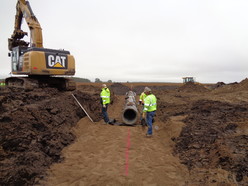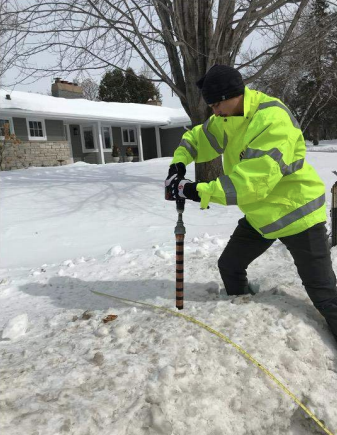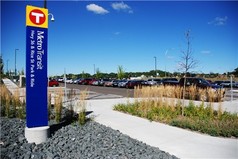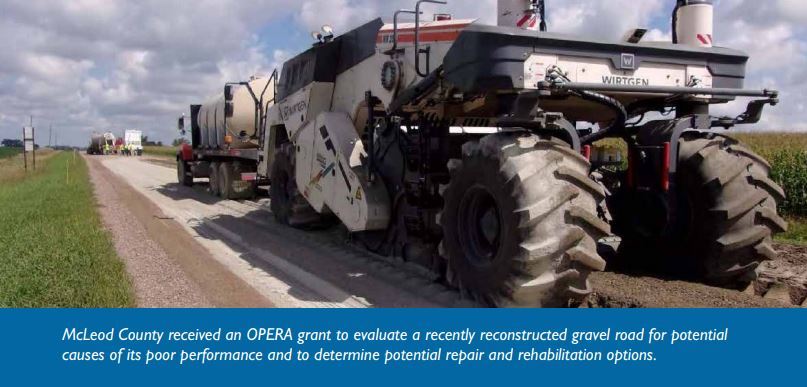
Minnesota agencies are partnering with 3M and Roads & Bridges Magazine to present, "Setting a Wet Reflective Pavement Marking Specification" on Tuesday, April 27, 2021 at 11 a.m. CST.
The performance of your road markings makes a difference in keeping your roads safe, day or night, wet or dry. Learn about wet reflective technology, test methods and pavement marking assessments and prioritization strategies for your roads. Hear from industry colleagues in Minnesota on the process of building a wet reflective specification (including information from a recently completed LRRB & MnDOT research study).
Victor Lund, St. Louis County Traffic Engineer, will cover how to install and maintain pavement markings, especially on challenging surfaces such a chip seals.
Visit 3M Technology Talks to register.
|

BRIDGES & STRUCTURES — A new guide compiles best practices for installing culverts and utilities to minimize the impact of seasonal movement of soils on pavement. The six-page guide addresses site evaluation, design needs, construction approaches and other factors. Also included are links to specifications, drawings and further information for designers and field crews.
Guidebook 2021RIC01
|

MAINTENANCE — Researchers analyzed plow data to correlate salt usage and weather events with the amount of chloride showing up in meltwater runoff from Edina roadways. Maintenance staff were provided this data and developed solutions to adjust deicing operations.
This adaptive management approach—constantly checking the effects of actions and making adjustments—is one way that local agencies may be able to more effectively reduce the amount of chlorides entering the environment and still achieve satisfactory winter traffic mobility. Researchers created an adaptive management manual for deicing and a spreadsheet calculator to help agency staff improve their deicing operations. Contact us to request a copy.
Report 2021-07
|

POLICY & PLANNING — With an aging workforce, Minnesota’s public transportation agencies must attract the next generation of employees or risk service disruptions and other challenges. To improve the pool of qualified applicants and build a healthy workforce pipeline the LRRB hired human resource experts from the University of Minnesota to analyze local agency hiring practices. The work culminated in a variety of recommendations to enhance the recruitment process and increase on-the-job satisfaction. From targeted marketing campaigns and clearer job descriptions to more opportunities for advancement, the strategies will help Minnesota’s transportation agencies attract and retain a younger and more diverse workforce for years to come.
|

MULTIMODAL — Researchers studied the effects of the Twin Cities’ Metro Transit Green Line light rail transit on automobile traffic on parallel and adjacent roadways. Using annual average daily traffic data from before and after the Green Line’s opening in 2014, researchers showed that the light rail transit line decreased automobile traffic on nearby roads as light rail ridership increased each year. In addition, a 2016 Metro Transit on-board survey of nearly 2,000 park-and-ride users guided researchers in developing a model to assist planners in effective design and placement of park-and-ride facilities.
Report 2021-03
|
 McLeod County evaluated a cement-stabilized gravel road with a double chip-seal surface for potential causes of its poor performance and to determine potential repair and rehabilitation options. The county received a Local Operational Research Assistance (OPERA) grant to conduct the evaluation and is sharing its findings with other agencies.
Interested in OPERA Funding? Local agencies can apply for funding up to $20,000 to research projects, test products, materials and methods, improve practices and modify equipment. Projects should focus on the timely development of relevant ideas or methods that improve transportation or maintenance operations. For more information and to apply for funding, visit the OPERA website.

Have you or one of your co-workers recently built an innovative gadget or developed an improved way to do a job? Now is the time to show off your creativity and help other agencies solve problems by submitting an entry to the Minnesota Build a Better Mousetrap Competition!
Your entry can be anything from the development of tools or gadgets to equipment modifications to processes that increase safety, improve efficiency, reduce costs, or improve the quality of transportation. The purpose of this competition is to collect and disseminate real-world examples of best practices, tips from the field, and assist in the transfer of technology.
The Minnesota competition is sponsored by the Minnesota Local Road Research Board and administered by Minnesota LTAP.
Submissions are due May 15, 2021.
Build a Better Mousetrap Competition
|
We're on LinkedIn! Follow our Local Road Research Board page for updates on research projects, new resources, and to connect with other local transportation practitioners. |
|
 |
|
|
To contact the Minnesota Local Road Research Board, or receive this publication or its contents in an alternative format, please call (651) 366-3780 or email research.dot@state.mn.us.
Minnesota Local Road Research Board • lrrb.org
|